Data Flow between SAP R3 and SAP BW
Data Flow between SAP R/3 and SAP BW
Unlike traditional data warehouses where OLTP applications schedule and trigger data extracts for data warehouses, called the push model, SAP BW uses the pull model to pull needed data from its data sources. You schedule data extracts from within SAP BW. SAP BW sends data extract requests to the appropriate data sources. The OLTP system collects/extracts and transports requested data to SAP BW. SAP BW loads its data in its data stores.
The entire data load process is managed from within the SAP BW Administrator Workbench, as discussed in Chapter 9, "Preparing R/3 Data Sources for SAP BW Initial Data Loads," and Chapter 10, "Loading Data via Flat Files." The SAP BW administrator and operations staff are responsible for scheduling data load jobs. However, the business analyst and SAP BW developers need to make sure that the data loaded in SAP BW is accurate and resolve problems if data loads fail or report several warnings. Figure 8-1 shows data flows between SAP BW and its data sources. Notice that the SAP BW staging engine needs to know full metadata and data content definitions (structures) from its SAP R/3 data source (extraction engine layer). This is achieved by importing metadata from the source SAP R/3. But how is SAP BW specific metadata captured and managed in SAP R/3? Here is how it works.
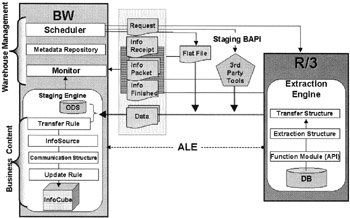
Figure 8-1: Information Flow between SAP BW and its Data Sources.
The SAP BW specific content and environment setup process in SAP R/3 is very similar to the SAP R/3 OLTP release upgrade. To verify that the SAP R/3 OLTP instance is properly upgraded with the SAP BW add-on, list table AVERS using transaction SE16. It must list BW-BCT, as shown in Figure 8-2.
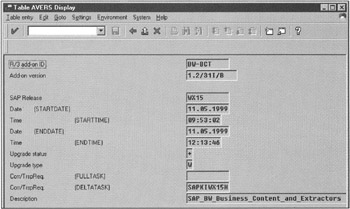
Figure 8-2: Verification of an SAP BW Add-On in an SAP R/3 OLTP Instance.
SAP provides several transports to load business content in SAP R/3. The actual number of transports varies based on your SAP R/3 version (3.0D through 4.6B) and the SAP BW version (1.2A or 1.2B and Patch numbers 1-12). These upgrade programs load objects in SAP R/3 for SAP BW data extractors in terms of database tables, InfoObject definitions, Extract structures, Extract programs, and other programs needed to build and set up data extraction schemes for SAP BW.
| Note | SAP BW business content in SAP R/3 is like a release upgrade. You must read, collect, and apply all relevant patches and OSS notes needed for a specific SAP R/3 version. Always check the OSS notes for the latest updates for business content because they frequently change. |
Metadata Management in SAP R/3 OLTP
After installing business content in SAP R/3, you need to create a logical system name using transaction SM59 for SAP R/3 instance as a data source. You will use this instance logical name to connect SAP BW to SAP R/3. Transaction SM59 requires special user privileges. In the SAP R/3 OLTP environment, the basis administrator usually has privileges to create logical system names. However, in the SAP BW development environment, a few SAP BW developers may require Basis-level privileges to define logical system names for data sources.
Metadata is stored in several tables, both in SAP BW and SAP R/3. Figure 8-3 shows the main tables in SAP R/3 that manage metadata for SAP BW.
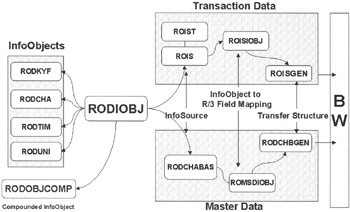
Figure 8-3: SAP BW 1.2B Metadata Management in SAP R/3 OLTP Instance. Tables that Manage SAP BW Specific Metadata.
Table RODIOBJ contains metadata for all InfoObjects in the source system defining its associated key figures, characteristics, time, and unit of measure in tables RODKYF, RODCHA, RODTIM, and RODUNI, respectively. Table RODIOBJCMP contains only the compounded InfoObjects associated with an InfoObject for the source system.
On the right of the RODIOBJ table in Figure 8-3 are two groups of information objects: transaction data and master data. The ROIS is a very important table for transaction data. It contains information on InfoSources, function modules, and extract structures needed to extract data from OLTP and prepare such data for SAP BW using transfer structures defined in the table for ROISGEN. For example, if you view table ROIS using transaction SE16, you will see that for SD InfoSource 2LIS_01_S001, SAP R/3 will use function module MCS_BIW_LIS_API to extract data using extract structure S001BIWS. This simple method of calling data extractors from SAP BW enables customers to implement their own data extractors by entering their function module, extract structure, and other parameters in ROIS. You learn more about extending SAP business content and writing custom extractors in Chapter 13, "Enhancing Business Content and Developing Data Extractors."
| Caution | One must be very careful when altering entries in any of the listed tables. Inaccurate changes made in these tables will cause erroneous results not only in SAP R/3, but also in SAP BW when metadata is refreshed. You must be trained in writing data extractors before defining your own custom data extracts and including such data extract information in these tables. |
The ROIS table contains the InfoSource definition for transaction data; the RODCHABAS table lists function modules for basic master data elements, their associated text, and hierarchies used to prepare transfer structure for SAP BW 1.2B.
Metadata Management in SAP BW
As shown in Figure 8-1, to load data in SAP BW, you need several data structures that receive information from data sources to populate InfoCubes. In SAP BW 1.213, metadata is similar to InfoObject metadata in the SAP R/3 OLTP instance. Figure 8-4 shows tables in SAP BW that store metadata for all information objects associated with InfoSources. Table names in italics represent master data entities.
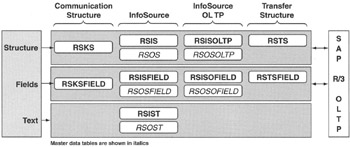
Figure 8-4: Metadata Tables in SAP BW 1.2B.
You may have noticed that identical objects are maintained in SAP BW and SAP R/3 that support entire information flow. How do you know where these objects reside? The simple rule of thumb is that RS-prefixed objects reside in SAP BW instances, and RO-prefixed objects reside in SAP R/3 OLTP instances. The RS stands for Reporting Server, and RO stands for the Reporting Server component in OLTP. For example, tables RSIS and ROIS hold InfoSource metadata in SAP BW and SAP R/3 OLTP, respectively. This naming scheme is not limited to tables; it applies to most other objects such as programs and function modules as well.
Because master data elements tend to be less complex than transaction data, notice that in Figure 8-4 there are only a few tables that handle master data metadata. However, for transaction data, there are individual tables for all data staging levels.
| Note | Today, metadata on SAP R/3 data sources is very tightly coupled with SAP BW 1.2B. In many ways, metadata for business content objects is duplicated in SAP BW and SAP R/3. For example, for InfoSources, the same mapping and transfer rules exist and are managed in both SAP BW and SAP R/3 data sources. The SAP BW 2.0 metadata model is not very tightly dependent on the SAP R/3 OLTP data sources. For this reason, the metadata mode in SAP BW version 2.0 will be very different from SAP BW 1.2B as described. In SAP BW version 2.0, most of the metadata will be managed from within SAP BW. Very minimal SAP BW-centric metadata will be kept in the SAP R/3 OLTP instance. |
Loading Metadata in SAP BW
Two methods can be used for defining InfoSource metadata in SAP BW. The first method involves importing directly from SAP R/3 as part of business content, and the second method is to define inbound data structures manually in SAP BW for SAP R/3 and non-SAP R/3 data sources.
When SAP BW add-ons have been completed and the SAP R/3 logical system name for SAP BW has been defined, you are ready to connect SAP BW and load metadata. In SAP BW, first define a source system in SAP BW pointing to an SAP R/3 instance, as described in Chapter 6.
After defining a source system and testing RFC level connections to the source system, you are ready to load metadata for InfoSources and other SAP BW specific objects defined in SAP R/3. Click the Source systems tabstrip. Expand the Source systems tree, and then right-click the Source System you want to load metadata from, as shown in Figure 8-5.
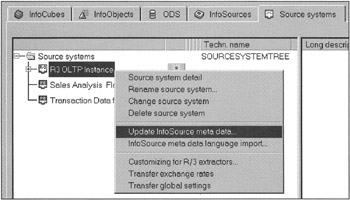
Figure 8-5: Loading InfoSources Metadata From an SAP R/3 Data Source.
Select the Update InfoSource metadata function, as shown in Figure 8-5. Metadata for all InfoSources defined in SAP R/3 is automatically transported in SAP BW.
| Note | You can refresh metadata any time. It is a common and recommended practice that when a data source happens to be SAP R/3, you enhance or create new InfoObjects in SAP R/3, and then refresh data in SAP BW 1.2B; for example, if you add a new field in the SAP provided Customer InfoSource 2LIS_01_S001 or you define a custom InfoSource in SAP R/3. By refreshing metadata, as shown in Figure 8-5, you will automatically bring new definitions in SAP BW. |
After updating metadata in SAP BW, go to the InfoSources and InfoObjects tabstrips. Expand the respective object trees. Many new entries are now listed as a result of the metadata update. You need this metadata before activating predefined SAP business content such as InfoSources, transfer rules, communication structures, update rules, InfoCubes, queries, key performance indicators, and channels.
For non-SAP R/3 data sources, first you define a data source in SAP BW for a flat file. Then depending on the content of the flat file, you may create a new InfoSource for master or transaction data.
If the flat file contains master data, it must have only one type of master data InfoObject. In other words, from one file you cannot load master data for customers and material. They have to be in separate files, each uniquely identified in SAP BW via unique InfoSources. When you attach a source system to an InfoSource, SAP BW asks for the metadata for the flat file. You learn more about loading data file flat files in Chapter 10.
Once metadata has been captured and validated in SAP BW, the rest of the staging process is the same as if the data source were SAP R/3.
| Team-Fly |
EAN: 2147483647
Pages: 174